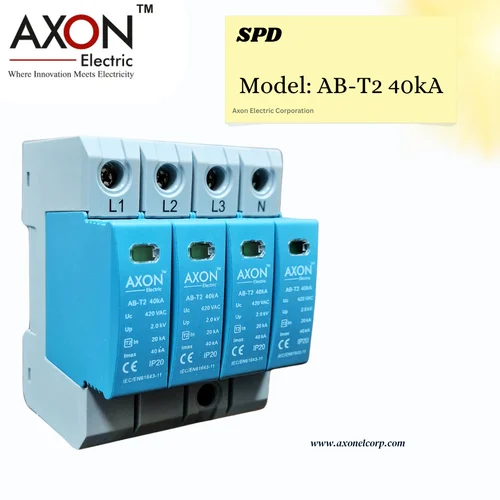
A Surge Protection Device (SPD) is a protective device for limiting transient voltages by diverting or limiting surge, thereby safeguarding electrical systems and appliances from voltage spikes caused by lightning or power grid fluctuations. It prevents costly damage and extends the lifespan of connected devices. SPDs were formerly referred to as Transient Voltage Surge Suppressors (TVSS) or secondary surge arrestors Secondary Surge Arrestors (SSA) By incorporating SPDs into electrical systems, users can prevent costly repairs, minimize downtime, and ensure uninterrupted power supply, making them a vital investment for homes, businesses, and industries. Type 1 SPDs are installed at the main service entrance to protect against external surges, Type 2 SPDs are placed at distribution panels for additional protection, and Type 3 SPDs safeguard end-use equipment like computers, televisions, and other sensitive electronics.
What are the Types in SPD’s?
Surge protection devices are broadly classified as either Type 1, Type 2 or Type 3.
Type 1 SPD’s are installed at larger installations where better protection is required from voltage surges especially from lightning strikes. They offer better Voltage Protection ( Usually upto 2.5 kV and greater fault current handling capability around 50kA than a type 2 SPD which usually offers protection upto 2kV and fault current capacity of 40kA). Therefore, type 1 offers better protection against voltage surges than Type 2 and is more expensive.
Type 3 SPDs are designed for point-of-use protection, installed at outlets or near specific terminal equipment. They provide precise surge protection for individual electronic devices and appliances, shielding them from lower-level surges that may originate nearby.
What is the comparison between surge protection and voltage protection?
Surge protectors are designed to defend against high voltage and high current surges, typically caused by lightning, providing instant protection. In contrast, over/under voltage protectors safeguard against the risks associated with excessively high or low voltage fluctuations in the power grid.
When a transient overvoltage event is detected, the SPD switches to Diverting Mode. Its primary function is to redirect the harmful impulse current away from critical loads while simultaneously lowering the resulting voltage to a safe, non-damaging level. The SPD offers a negligible resistance to surges, thereby shorting the impulse and protecting the sensitive equipments connected downstream.
Key Benefits of a Surge Protection Device
- Protects Expensive Electronics – Shields appliances, computers, and home/business equipment from power surges.
- Prevents Electrical Fires – Reduces the risk of fires caused by voltage spikes, enhancing safety.
- Extends Equipment Lifespan – Minimizes wear and tear on electrical devices, leading to longer operational life.
- Reduces Downtime & Maintenance Costs – Prevents damage-related system failures, avoiding costly repairs.
- Enhances Home & Workplace Safety – Provides peace of mind by securing valuable electrical infrastructure.
- Defends Against Lightning Strikes – Diverts dangerous surges away from electronics, preventing catastrophic failure.
- Cost-Effective Protection – A small investment that prevents expensive damage to electrical systems.
- Ensures Stable Power Supply – Helps maintain consistent performance for critical equipment like medical devices and servers.
- Compatible with Various Applications – Can be installed in residential, commercial, and industrial settings.
- Complies with Electrical Safety Standards – Designed to meet industry regulations for maximum reliability.
Key Features of a Surge Protection Device & How They Address Customer Pain Points
- Multi-Stage Protection – Offers layered defense against small and large surges, solving the issue of inconsistent protection.
- High Energy Absorption Capacity – Can handle strong surges, addressing concerns about inadequate protection.
- Fast Response Time (<1 nanosecond) – Instantly reacts to voltage spikes, ensuring minimal damage risk.
- Thermal Fuse Technology – Prevents overheating, eliminating fire hazards from prolonged surges.
- Compact & Space-Saving Design – Allows for easy installation without taking up too much space.
- Weatherproof & Durable Housing – Ensures longevity even in extreme environments, addressing concerns about durability.
- Multiple Connection Options – Available in plug-in, panel-mounted, and hardwired models for various needs.
- Noise Filtering & EMI/RFI Protection – Reduces electrical interference, improving device performance.

